Plot hole: There is a barely credible explanation for the fact that a guest cannot be injured or killed by being shot in Westworld, but what about the vicious fistfight we see in the bar? People are injured or killed in bar brawls all the time, and this one was incredibly violent. How do they prevent guests from being injured or killed by the cutting and stabbing weapons we see in Medieval and Roman World? Guests are supposed to fight each other, not just robots - they cannot be 'programmed' to lose! Delos is going be sued into bankruptcy within a week of the first guest arriving. Quite apart from the legal position, think about the bad publicity! Who is going to pay the huge fees demanded by the parks owners when the media is constantly reporting on the guests who wound up dead or with life changing injuries?
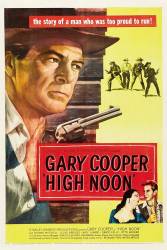
Plot hole: Frank Miller sets fire to the stable Kane is hiding in; when he leaves it, you can see the large column of smoke. But the fire is ignored after that. In an age of wooden buildings and poor fire equipment, that could have burned down the whole town. Even assuming that people wouldn't come out to fight the fire during the gun battle, you'd think that when they all came out at the end, someone would have pointed out they had a major fire to deal with. (01:16:40)
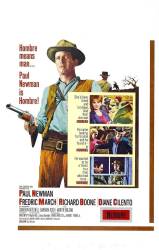
Plot hole: Towards the end of the film when Newman and the remaining stagecoach people are in the cabin at the top of the hill, Richard Boone's character sends one of his two henchman (the Anglo, not the Mexican) around to the back of the cabin to apparently surprise them from behind. Then Newman's character walks down the hill and Boone and the Mexican henchman are all killed in a shootout. Everyone comes out of the cabin, comes down the hill and the credits roll. I guess that now, almost 40 years later, that poor Anglo-henchman is still behind the cabin, waiting for them to come out.
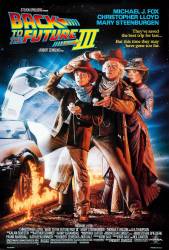
Plot hole: Although Marty rips the fuel line, not all the fuel would have drained out of the tank. Only the fuel that was already in the fuel line would have leaked out, meaning it could simply be patched, bled and the engine would run without a problem.
Suggested correction: A cut fuel line could absolutely drain the tank. Even if not a direct route with respect to gravity, it could still create a siphon effect and drain the tank.
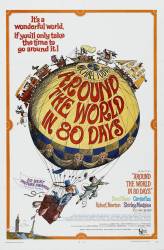
Plot hole: When Fogg convinces the cargo ship captain to take him to Shanghai, he pays for the passage of himself and two of his colleagues. One of these colleagues is Aouda, but as Passpartout is not there, the other one must be Fix. Why, then, does Fix have to pay for his own passage? If you notice, Fogg seems surprised to see Fix on board.
Suggested correction: At no point do they travel to Shanghai. They travel from India to Hong Kong to Yokohama. There is no scene where he negotiates with the cargo ship Captain. And he is definitely not surprised to see Fix. Are you sure you were watching the 1956 version?
Suggested correction: Just in case Passpartout does show up at the last minute? Also, knowing Phineas Fogg, he has probably already hired Passpartout's replacement and it is for him.
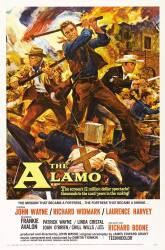
Plot hole: The morning of the final battle, the sun rises behind the mission, silhouetting a sentry. When the ending credits roll, the sun sets behind the mission.
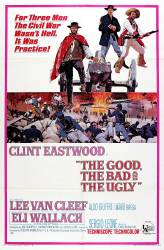
Plot hole: After Blondie has "teamed up" with Angel Eyes, he hears a gunshot and says something like "Every gun sings its own tune", indicating that he's recognized the shot as being from Tuco's gun. But how did Tuco get his gun back? It certainly would have been confiscated when he entered the prison camp, and the chance that the guard on the train has that exact gun is extremely unlikely - he would most likely have had an officially issued sidearm.
Suggested correction: It's the type of gun Tuco likes that makes that particular sound.

Plot hole: Kane and Irons abandon their horses to hook a ride on the train, leaving behind their rifles. When they get to Hadleyville, Kane has somehow reacquired his Sharps.

Plot hole: Immediately before the attack on Pony-That-Walks' village Capt. Brittles states that it's 12 minutes to midnight,and orders the attack. The attack is a surprise attack, yet all the warriors pile out of their tipi's fully clothed, painted and with their eagle feathers braided into their hair.
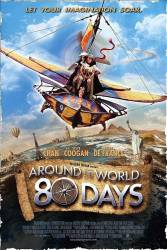
Plot hole: The hot air balloon carries Fogg and friends quite a distance, but where is the heat source?
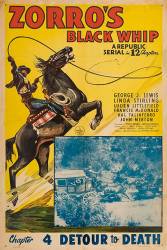
Plot hole: Vic Gordon finds the Black Whip's clothes and puts them on. Then he goes to rescue Barbara Meredith (the real Black Whip). Strangely, her outfit fits him perfectly. In other scenes, he is taller and more muscular than she is. Did she keep several sets of clothes in various sizes, including boots?
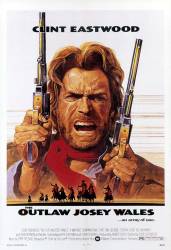
Plot hole: When Josey gives the redlegs a "Missouri boat ride" by shooting the tow rope on the ferry, the craft drifts off down stream, silhouetted in the setting sun. The problem is, Josey and the kid are on the east bank, instead of the west bank where the Indian nation is located.

Plot hole: The women leave the bordello and cross a waterless, hot mineral desert to reach Jericho. Meanwhile the posse that arrives at the bordello behind them takes a different route and catches up with them near the mine. Why didn't the women go that way?
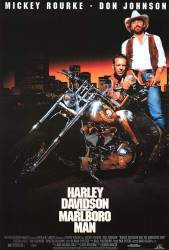
Plot hole: At the bar shootout where everyone except Marlboro and Harley are murdered, the two jump through the window, over the fence, into the airport, and into an airplane luggage compartment. They would have been caught by security. The missing, and dead, airport worker would have been missed and searched for, the gunfire would have attracted attention, and the police would have been called. They never would have left the airport.
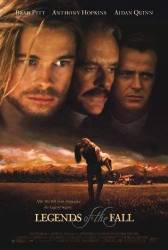
Plot hole: During the war sequence, when Samuel dies, how necessary was it for the two Germans to go through the trouble of setting up a machine gun to shoot him? I find it hard to believe they had no other weapon but that. It seems to have been done only to build suspense. (00:42:45)
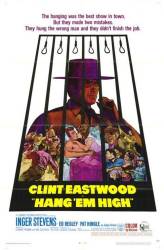
Plot hole: The judge asks Jed Cooper if he would like to see what McCloud looks like, (McCloud is the killer who cheated him and murdered the rancher), as he is being hanged. Of course since Jed Cooper had previously purchased the cattle from McCloud, he knew what he looked like. (00:10:00 - 00:15:00)
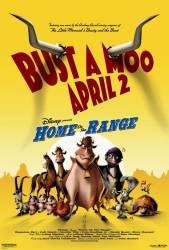
Plot hole: In the scene where the Sheriff stops the cows' brawl, he gives them to the Chinese man. The Sheriff knows what Pearl's animals look like, so why didn't he recognize the cows as Pearl's?
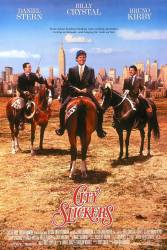
Plot hole: Norman, the orphaned new-born calf, could not have survived more than a few days after birth unless he was adopted by a foster-mother cow. The cattle were not dairy cows, and it's obvious the "cowboys" are not providing milk or other sustenance for Norman. Even if he had lived, he would be extremely weak and emaciated and physically unable to run with the herd.
Suggested correction: We see that they are providing said food for Norman, and secondly, we never see if another cow does indeed do exactly that. After all, they can give milk, just not enough to sell, so Norman could indeed get fed.

Plot hole: Guns were prohibited in the town of Big Whiskey. But in the final scene, Little Bill tells the Greeley's patrons to take out their guns and shoot Will Munny once Munny fires the last round in his rifle. A patron is even seen holding a gun after Munny shoots Little Bill and three of the deputies. According to the town ordinance, only Little Bill and the Sheriff Deputies would have had guns in that saloon, and they would not have had to be told. (01:57:00)
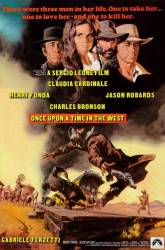
Plot hole: On her first night alone on the McBain farm, Jill hears someone playing a harmonica out there in the dark. She blows out a candle (but there is still plenty of light in the room), grabs a gun, positions herself at the brightly lit window, and shoots when the sees tha harmonica player lighting a match. This behavior is way too foolish for a women depicted as street-smart as Jill. (00:55:30)
Suggested correction: The explanation given in the TV show would seem to easily apply to the original film as well: guests can be injured, but not to the point that it would leave a lasting mark. The park has access to futuristic medical techniques, so they can heal most non-life-threatening injuries easily. Also the guests almost certainly sign waivers, so in the event of serious injury the park isn't liable.
Suggested correction: It's easy to nitpick the factual details of "Westworld," the screenplay of which was written on-the-fly on a fairly limited budget, even by early 1970s' standards. Author Michael Crichton (who also wrote "The Andromeda Strain," "The Terminal Man," "Congo," "Sphere," "Jurassic Park" and several other technological thrillers) himself acknowledged that Westworld was more a visual story (like a comic book) than a cerebral piece of science fiction, and he learned on this movie that suspension of disbelief outweighed technical or even factual details, if he wanted to expedite the story in an hour-and-a-half. Crichton said he was having more fun and devoting more time to shooting the film than actually writing it, comparing the experience to playing cowboys and indians as a child. So, yes, Westworld is not much more than an adult fantasy with a number of plot holes that we are supposed to gleefully overlook, rather than analyze.
Charles Austin Miller
Except for blatant continuity mistakes you just invalidated every single entry on this site.
Suggested correction: Westworld ensure that any interactions with the robots are entirely safe for the patrons of the park. They cannot prevent humans fighting amongst themselves, just as Disneyland can't prevent people fighting there. People are also injured or die all the time in horse-riding accidents, but that won't lead to people suing Westworld. Due to the nature of the park, all the guests likely sign a waiver stating that any injuries are not the fault of the park.
Utter rubbish. Guests who were completely innocent bystanders could be killed or injured by the actions of other guests, notably in the bar brawl or by the explosion used in the jailbreak. We see one guest smash a barstool against the back of another guest - not a robot - which could easily have broken his spine. There is no question whatever that the owners and managers of the park would be held liable in this and many other cases, just as amusement park owners and managers nowadays are held liable when roller coasters or other rides go awry, injuring or killing guests.
The most plausible explanation would be a waiver that visitors to the park have to sign. The waiver would explain that while the robots cannot harm humans, other humans can, and the park is not held responsible. In the event of death or serious injury, the guest who caused it would face criminal charges and possibly a civil lawsuit. But a waiver would protect the park. Also, the rules of the park may be similar to those in the HBO Westworld series, where the robots cannot cause a "permanent mark", meaning they can injure guests as long as the injury is repairable.